
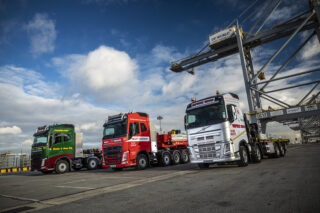
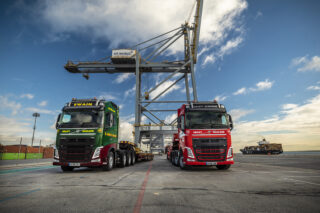
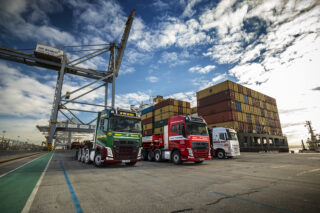
BRAND IDENTITY AND HERITAGE ARE POWERFUL TOOLS WHEN IT COMES TO MARKETING A SEPARATE SERVICE WITHIN A LARGER PARENT COMPANY. HEAVYTORQUE HEARS HOW THE SWAIN GROUP DOES IT WITH ITS SPECIAL PROJECTS DIVISION.
The trouble with road transport is that it’s all-too easy to pigeon-hole a company within it. You see one of its trucks on the road, and immediately know the kind of business it’s in. At least, you think you know. Take the Swain Group. ‘Serving industry since 1918’, running one of the largest flat-bed trailer fleets in the country, based in Rochester Kent, and noted for a historic fleet-acquisition policy based on buying late-plate good-quality used trucks. So it’s your typical, large, national general haulier…right? Wrong.
Look at the Swain Group website and it’s clear it’s a very diverse business. Yes, it still does general haulage, storage and distribution. Only today a quarter of its revenue comes from its Special Projects Division (SPD), made up of three separate companies – Hallett Silbermann (the legendary heavy haulier), lifting-experts Gatwick Plant and R Swain & Sons. Together, they deliver a £20m annual turnover to the group, providing specialist transportation services to customers in the construction, energy and infrastructure sectors.
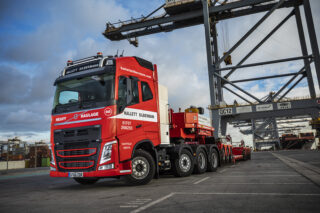
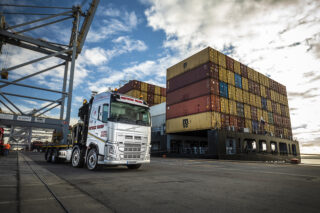
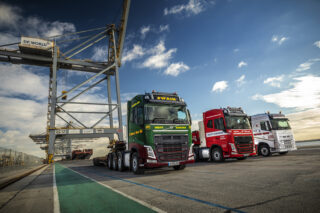
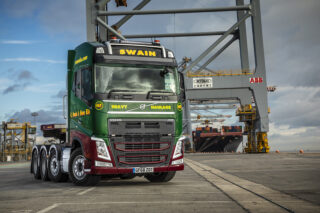
GERMAN COMPANY PAUL NUTZFAHRZEUGE HAS A LONG HISTORY OF BOTH MODIFYING VEHICLES AND DEVISING VIRTUALLY UNIQUE SOLUTIONS FOR COMPLICATED TRANSPORT TASKS. IT ALSO HAS A CLOSE ASSOCIATION WITH MERCEDES BENZ. HEAVYTORQUE VISITS ITS NEW PURPOSE-BUILT VEHICLE CONVERSION FACILITY AT VILSHOFEN.
While most truck manufacturers, offer a huge range of vehicle specifications to meet many users’ requirements, there will always be specialist applications that require something different to meet an operator’s specific needs. From a large manufacturer’s viewpoint, trying to achieve this is sometimes impossible – its integrated production facilities are organised to produce large numbers of its mainstream models.
There might well be a huge number of different variants of these models, especially in terms of axle layouts, powertrain options, cab designs and layouts etc., but there has to be a limit to what can be achieved without causing too much disruption to the production line operation. Modern production methods mean that all of the relevant components required to build a particular version of a truck, are delivered to the assembly plant at the required time when that chassis commences its journey down the production line.
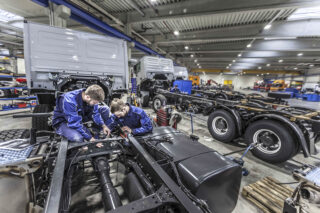
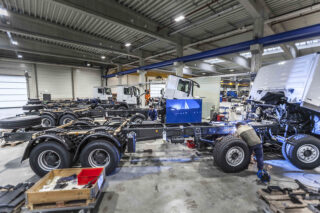
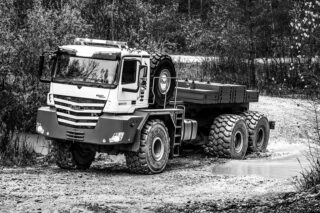
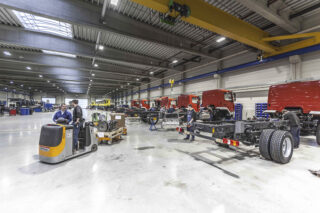
Issue Nineteen: with 172 pages of first-class journalism and photography, what more can you wish for? HeavyTorque, Britain’s best loved specialist transport title! Click the appropriate link below to purchase your annual subscription, or individual copy.
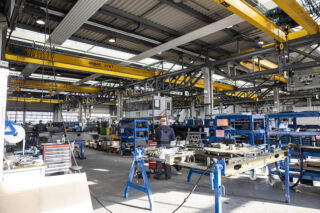
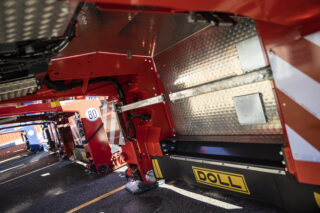
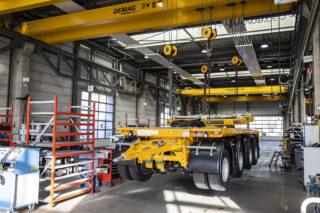
AFTER A FOUR-YEAR GAP, HEAVYTORQUE PAYS A RETURN VISIT TO DOLL, THE GERMAN SPECIALIST TRAILER MAKER, WHERE HEAVYTORQUE LEARNS ABOUT ITS LATEST PRODUCTS, GROWING SALES CURVE AND ‘CAN-DO’ ATTITUDE TO DIFFICULT JOBS.
Sven Koscielny, the ebullient area sales manager Europe for DOLL Fahrzeugbau’s Heavy Haulage Product Division clearly enjoys a challenge. Having originally completed six-years of mechanical and electrical apprenticeship training at the German trailer maker, he was put to work in the final assembly shop. You’d think he’d be pleased. Actually it was the last place he wanted to be. “It was repetitive. Everything was ‘new’, clean and in good condition,” he recalls, before adding with a broad smile “This was boring for me! So I asked if I could go into the service dept. to have more challenging projects. It was on a Friday afternoon and an hour later the service workshop manager came up to me and said ‘Monday morning at 7:00am you start in my department’.”
The move led to him to become the number one electrician in the DOLL service department, a job that took him all around the world delivering service workshops and training. He got plenty of challenges along the way too. “Wherever there was a breakdown they sent me – to Russia, to Denmark, to Algeria” he says.
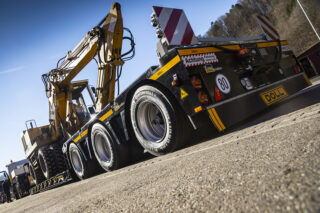
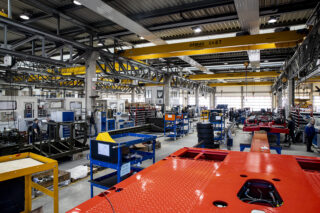
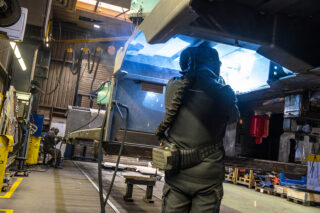
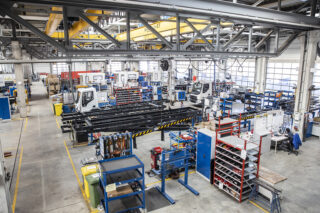
SUNSEEKER INTERNATIONAL BUILDS BIG, EXPENSIVE MOTOR YACHTS. MOVING THEM BY ROAD CAN BE A CHALLENGE AS HEAVYTORQUE DISCOVERS.
Transporting sleek motor yachts, often weighing up to 44 tonnes and worth millions of pounds, down narrow and busy roads is a challenging task. Organising such movements so that they occur without mishap would test the competence of any company executive – but it’s all in a day’s work for Mark Garside. As transport and export manager at leading motor yacht builder Sunseeker International he is directly responsible for a 10-strong fleet, with three trucks used for abnormal loads. “We move over 600 abnormal loads a year,” he says.
The trucks transport bulky components such as flybridges – they sit above the main deck – and hulls as well as the boats themselves. They are moved between Sunseeker’s different locations during the construction process. Mould tools have to be moved too. They are used to mould the hulls, decks and flybridges.
The way in which Sunseeker has evolved during the half-century since its foundation means that it operates no less than seven sites in its home town of Poole in Dorset (two of which are land-locked).
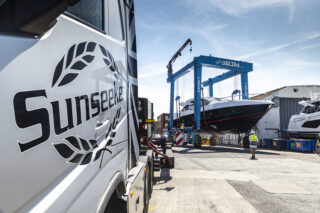
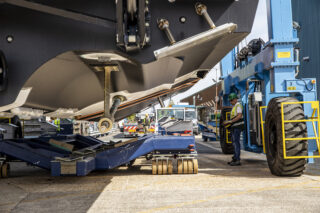
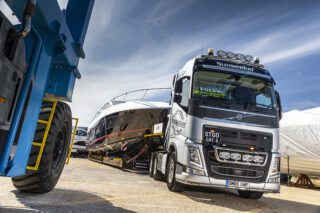
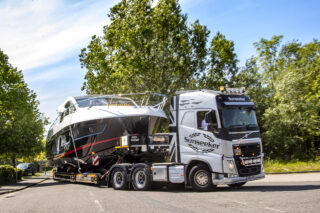
Issue Nineteen: with 172 pages of first-class journalism and photography, what more can you wish for? HeavyTorque, Britain’s best loved specialist transport title! Click the appropriate link below to purchase your annual subscription, or individual copy.
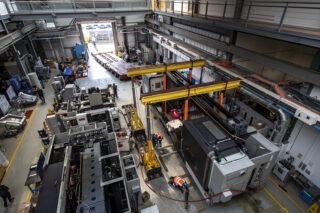
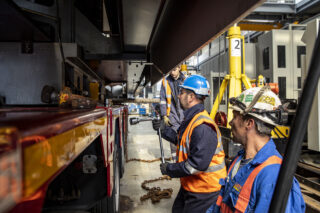
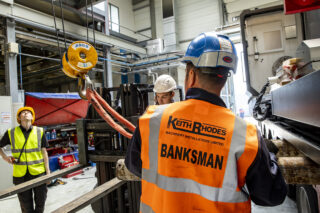
WHEN KEITH RHODES MACHINERY INSTALLATIONS WAS CALLED IN TO MOVE A 55-TONNE LATHE A MILE DOWN THE ROAD EARLIER THIS YEAR, CAREFUL TEAMWORK WAS REQUIRED WITH TWO SPECIALIST SUB-CONTRACTORS TO ENSURE THE JOB WENT OFF SMOOTHLY. HEAVYTORQUE FINDS OUT MORE.
Even the simplest of jobs in heavy haulage call for careful planning and disciplined teamwork. When Keith Rhodes Machinery Installations, based in Gloucester, was given a contract by an engineering services firm on behalf of aerospace components manufacturer Advanced Manufacturing Sheffield (AML) to move a 55-tonne lathe from the Advanced Manufacturing Research Centre (AMRC) at The University of Sheffield to an AML site just a mile down the road, it was clear – despite the short distance involved – that it was going to need some specialist assistance.
The 12.7m long, 3.5m wide, 3.5m high lathe, which would cost about £1m to replace, needed relocating earlier this year from AML’s site at the AMRC, where it had been carrying out prototype work for some of the biggest aerospace companies in the world, to move into a manufacturing role at its new home.
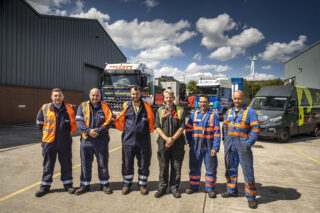
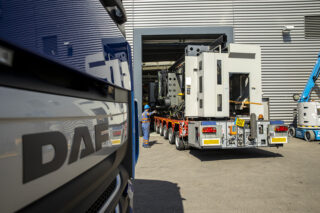
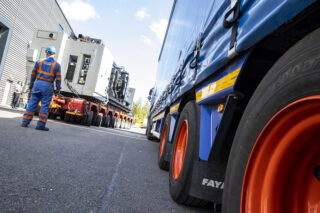
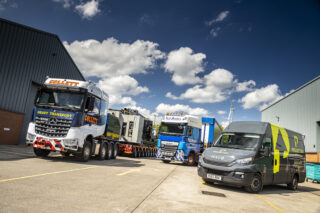
BASED 12 MILES NORTH OF DUBLIN IS ASHBOURNE TRUCK CENTRE, IRELAND’S ONLY SUPPLIER OF FAYMONVILLE, MAX TRAILER AND SCHMITZ TIPPING TRAILERS. IT’S BEEN IN BUSINESS FOR ALMOST 30 YEARS, PROVIDING BOTH SALES AND REPAIRS OF TRUCKS AND TRAILERS. HEAVYTORQUE TALKS TO THE COMPANY’S OWNER JOE MOONEY AND HIS DAUGHTER SARAH.
Ashbourne Truck Centre’s Joe Mooney is his own business advisor and a highly pragmatic one at that. His pragmatism is based on the lessons he’s learned from a lifetime in the transport industry – which as we are all aware is a tough school where the lessons are often hard learned and students must be resilient to stay the course.
Mooney formed Ashbourne Truck Centre (ATC) in 1990, breaking trucks for parts and selling what he describes as good second-hand refurbished trucks that he could stand over. After a few years in the late nineties, however, he noticed a gap in the trailer market for low-loaders. ATC soon started filling that gap with a Portuguese-built trailer, the ARB, which was supplied to him by the late John De Mulder. Over the next six years, Mooney built a very good business relationship and friendship with John and his wife Pat.
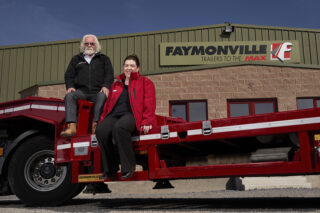
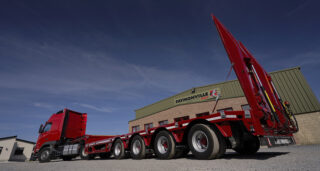
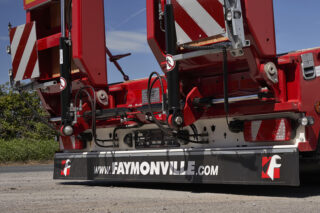
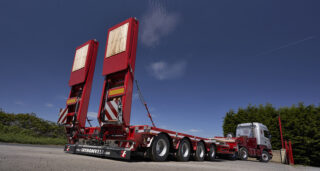
Issue Nineteen: with 172 pages of first-class journalism and photography, what more can you wish for? HeavyTorque, Britain’s best loved specialist transport title! Click the appropriate link below to purchase your annual subscription, or individual copy.
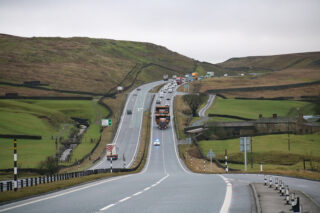
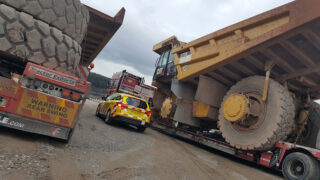
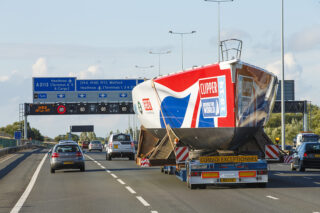
FOLLOWING CONTINUED CRITICISM OF THE GOVERNMENT’S ESDAL SYSTEM FOR THE ROUTING AND NOTIFICATION OF ABNORMAL LOADS, HEAVYTORQUE MEETS A MAN WHO BELIEVES WE CAN LEARN FROM THE EUROPEANS, AND A BRITISH HAULIER WHO THINKS HE MIGHT BE RIGHT.
It was a Saturday morning in 1976. I was 19 years old, a trainee, alone in the traffic office at Pickfords Heavy Haulage in Birmingham. The operator of Hams Hall Power Station had been on the phone asking us to arrange the urgent move of a 46-ton LP rotor, with a diameter of 13’6”, on the following Tuesday morning. Then, as now, the movement needed two clear days’ notification to the authorities, so I knew I had to send out the indemnity form that morning. I worked out the route, then wrestled with the Gestetner duplicating machine to print off the indemnity forms, before realizing I didn’t have access to the stamps, which were locked in the petty cash box in the safe. In desperation, I laboriously typed out the form again on the Telex machine, and sent it to what I hoped were the correct numbers for the police and councils. I remember getting a phone call from a rather baffled librarian at Staffordshire County Council on the Monday morning asking why I’d sent the notification to her!
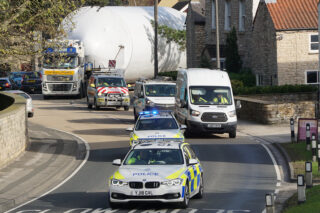
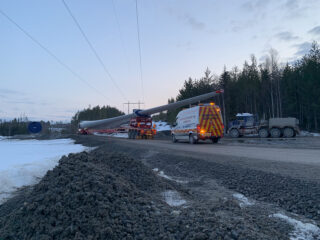
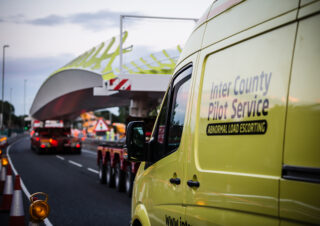
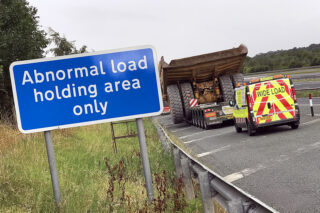
IN THE FIRST OF A NEW SERIES THAT SHINES THE SPOTLIGHT ON SOME OF THE STALWARTS OF THE HEAVY HAULAGE INDUSTRY, HEAVYTORQUE HAS BEEN TO MEET 79-YEAR-OLD MICK CRAWSHAW, WHO’S SPENT NEARLY 60 YEARS AS A DRIVER AND OPERATOR.
It was inevitable that Mick Crawshaw would become a truck driver. His father drove for a local coal merchant in Scunthorpe, and some of his earliest memories are of peering over the steering wheel of his Dad’s Commer two-stroke and trying to guide it around the yard. Of course, he had to wait until he was 21 before he could take his test and do it legally, and his Dad duly got him a job driving for Don Wright’s Haulage.
“My first wagon was a Vulcan,” Crawshaw recalls, “which was pretty ancient even then, but Don also ran Commers and Dodges. I then moved to T H Brown’s in Grimsby, and drove a Scammell Highwayman, but it was just general haulage in those days.”
That all changed in the early 1970s when he got a phone call from George Curtis, a former BRS man who he’d known for several years.
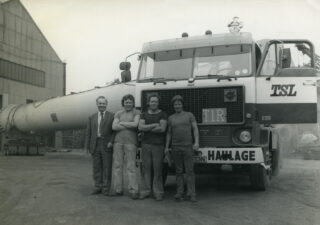
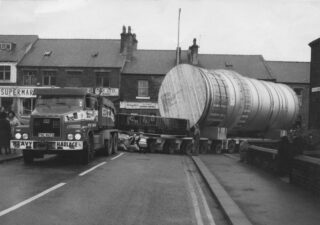
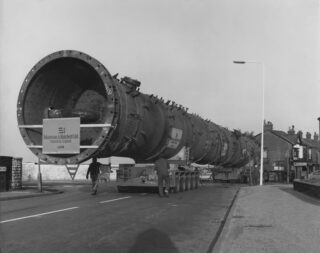
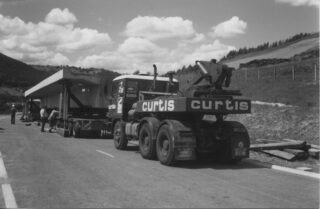
Issue Nineteen: with 172 pages of first-class journalism and photography, what more can you wish for? HeavyTorque, Britain’s best loved specialist transport title! Click the appropriate link below to purchase your annual subscription, or individual copy.
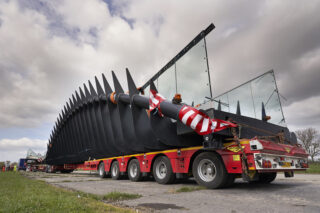
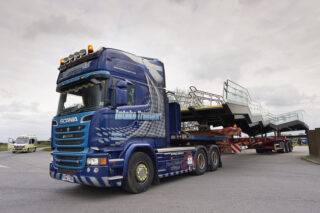
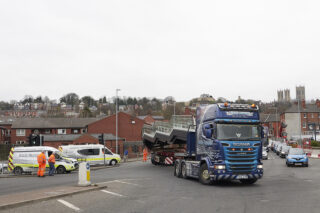
SCUNTHORPE-BASED INTAKE TRANSPORT TOOK UP THE CHALLENGE TO TRANSPORT A COMPLETE STEEL FOOTBRIDGE FROM SCOTLAND TO THE MIDDLE OF LINCOLN AND PLACE IT ACROSS A MAIN RAILWAY LINE WITHIN A RIGID TIME FRAME. HEAVYTORQUE CAUGHT UP WITH THE TEAM FOR THE LAST PART OF THE OPERATION.
Moving any oversize load by road invariably takes a lot of planning, route checking and careful organisation, also the greater the distance to be covered matters and multiple loads mean that there are far more factors to be taken into account. Add a city centre delivery point and a strict deadline – the cargo has to be positioned and assembled across a main railway line within a rigid time frame dictated by the closure of the track late on a Saturday night. Then the haulier, along with the other service providers, have really got their work cut out to ensure that everything goes exactly to plan.
Scunthorpe-based Intake Transport was faced with just this dilemma when it won the contract to move a complete foot bridge from the Scottish manufacturer Miller Fabrications, based in Wishaw, to a site in the middle of Lincoln.
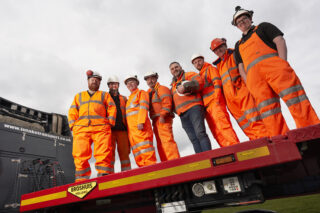
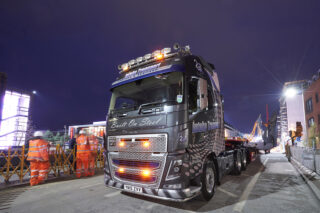
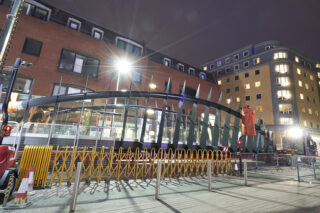
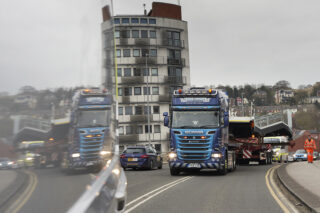
IN THE SECOND OF OUR NEW ‘HEAVY HERITAGE’ SERIES, HEAVYTORQUE LOOKS BACK TO A MOVE WHICH WAS UNDERTAKEN BY BRISTOL-BASED KINGS HEAVY HAULAGE ON SUNDAY 20 AUGUST 1989.
This particular operation involved the movement of two offshore platform crane modules from bath-based builders Stothert and Pitt. Sadly, these were the final pieces to be built prior to closure of the renowned manufacturer which traded for over 200 years.
Kings had previously transported several smaller crane modules from the works, but these two, measuring 7.6m wide and 6m high, were certainly the largest of them all. Both 70-tonne cranes had been loaded onto the trailers the previous day so at precisely 06.00hrs the convoy crept away from the factory gates onto the A4 with police assistance utilising two motorcycles and a patrol car to escort.
Poised for a very eventful 20-mile journey into Avonmouth, travelling up ‘in the gods’ were respective teams from the local electricity and telephone companies who were on hand to guide the loads beneath any overhead obstructions (cables).
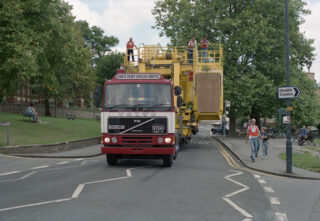
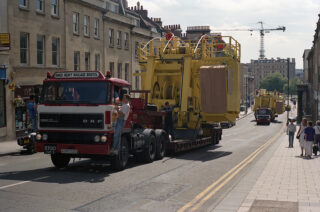
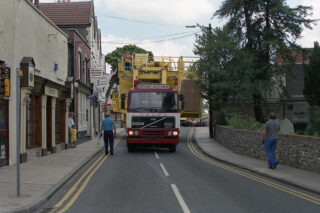
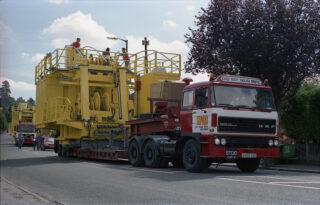
Issue Nineteen: with 172 pages of first-class journalism and photography, what more can you wish for? HeavyTorque, Britain’s best loved specialist transport title! Click the appropriate link below to purchase your annual subscription, or individual copy.